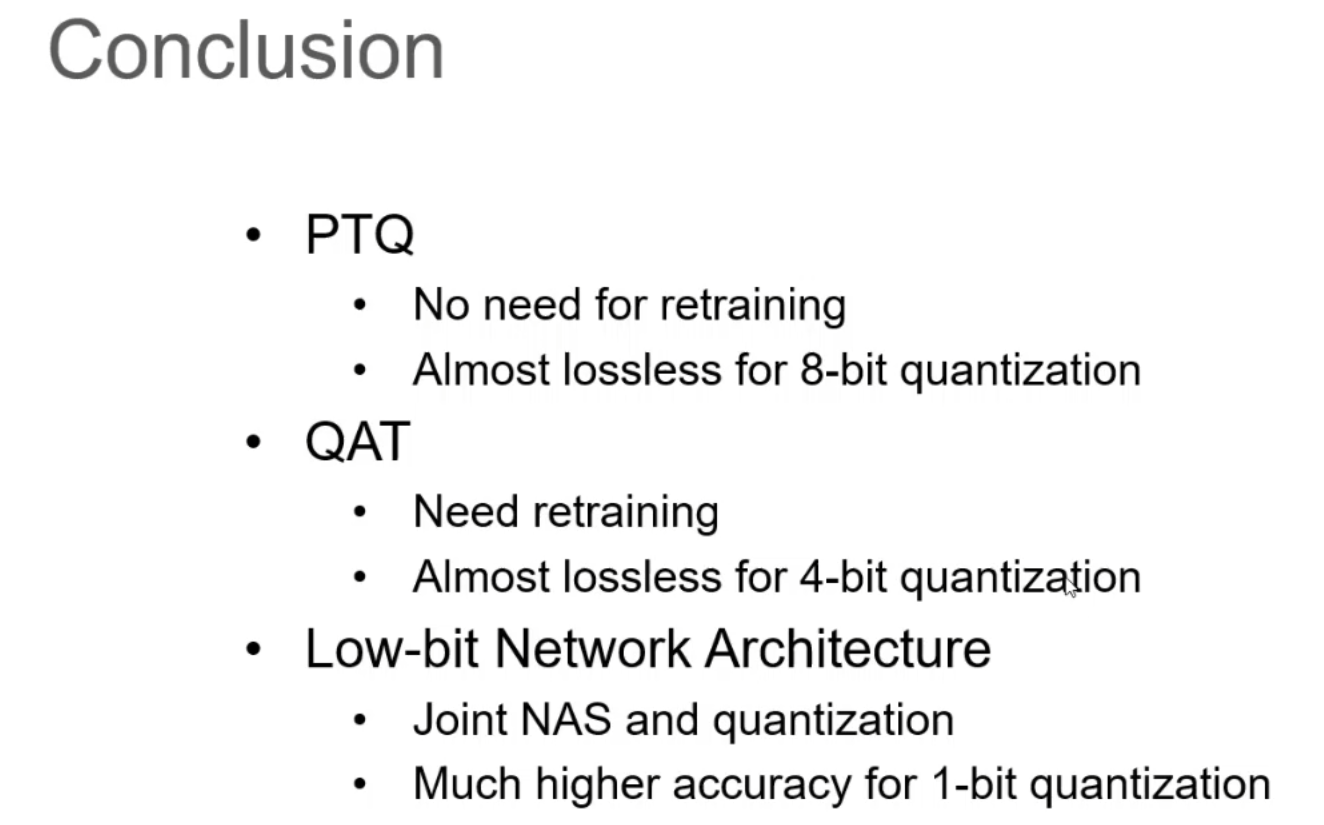ASP-DAC21 Tutorial
2022/1/5
Talk1 - by Zidong Du
- Dedicated NN processors
- 提到GPU for Image Processing, DSP for Signal Processing, __ for Intelligence Processing的观点
- *市场巨大
- 2 set of research work(DNN related architecture work):
- DianNao
- Cambricon Series
- Training is critical to AI application
- time-consuming
- Low bit width
- smaller size of memory accesses
- faster computing
- smaller area of hardware
- 现有的硬件厂商已部分支持低比特推理(quantization is widely used in inference)
- 有一张backward量化的图,没太懂(top_diff & bottom_diff):
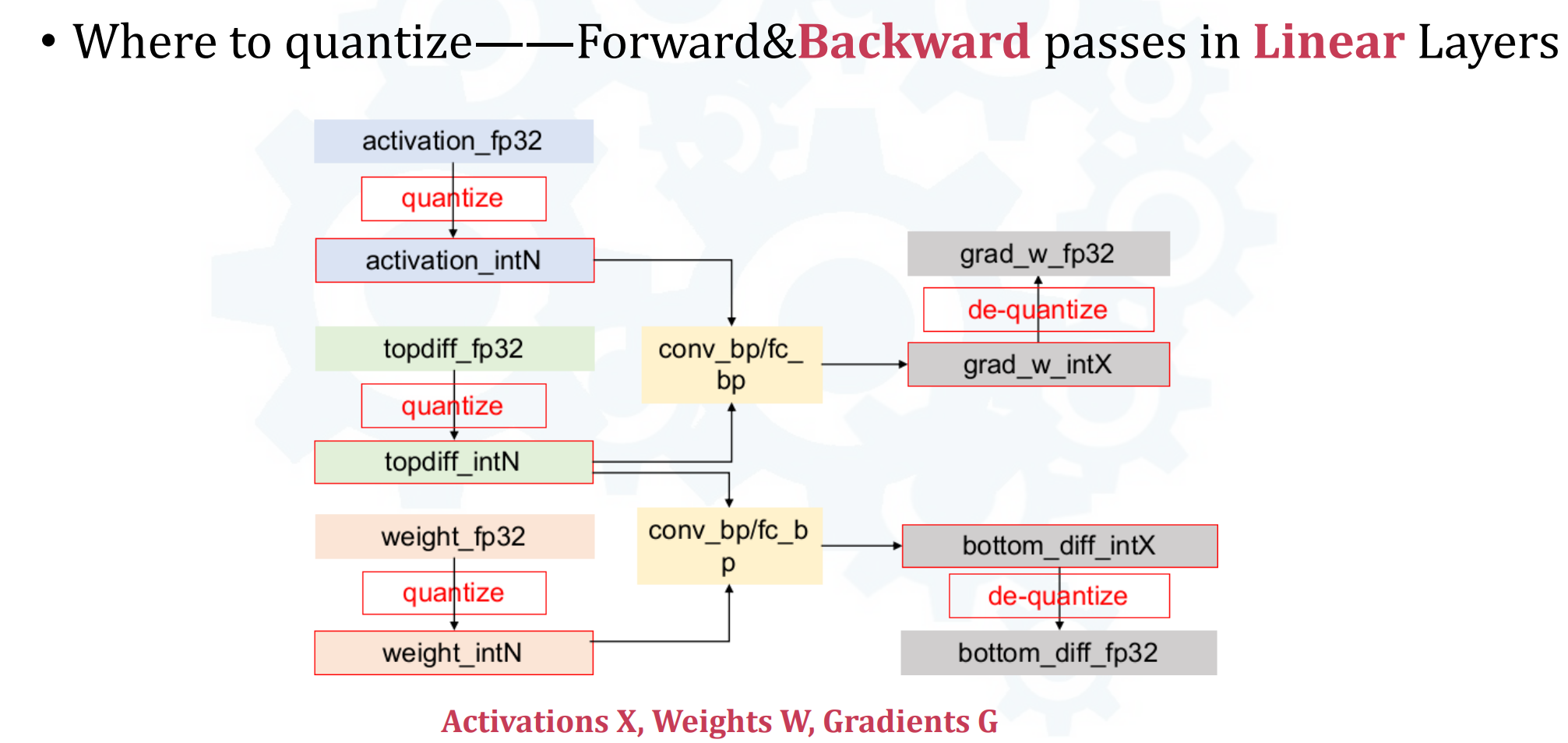
- 数据分布与量化区间的三种关系:
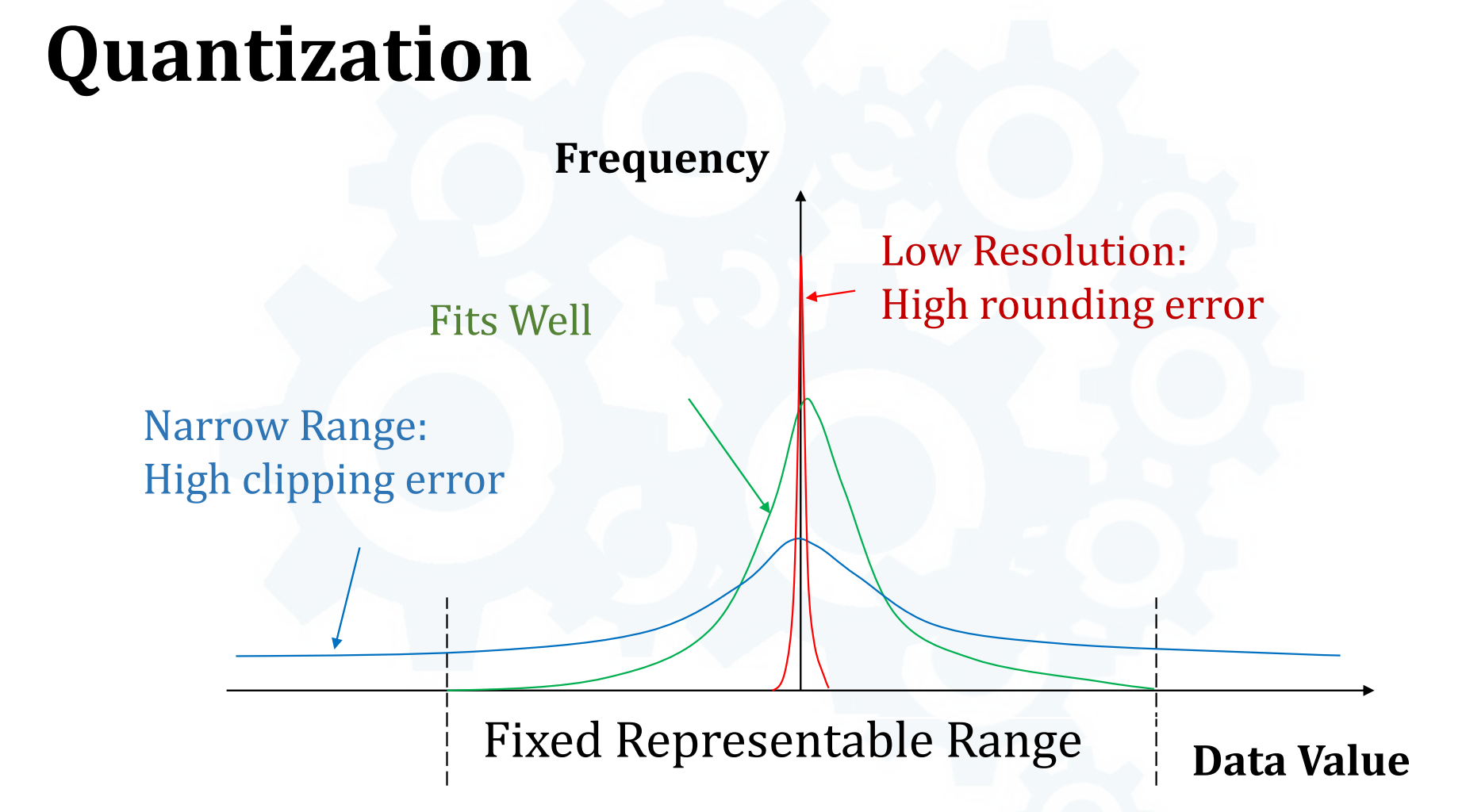
- 绿色分布合理,rounding error与clipping error都比较小
- 红色rounding error较大
- 蓝色clipping error较大
- Quantization Algorithm
- 现有的算法需要根据统计数字确定量化范围,需要额外的GPU/CPU access开销,因此没有实际的加速效果
- Quantized Training on GPU - 因此在GPU上Int8训练比FP32训练还慢
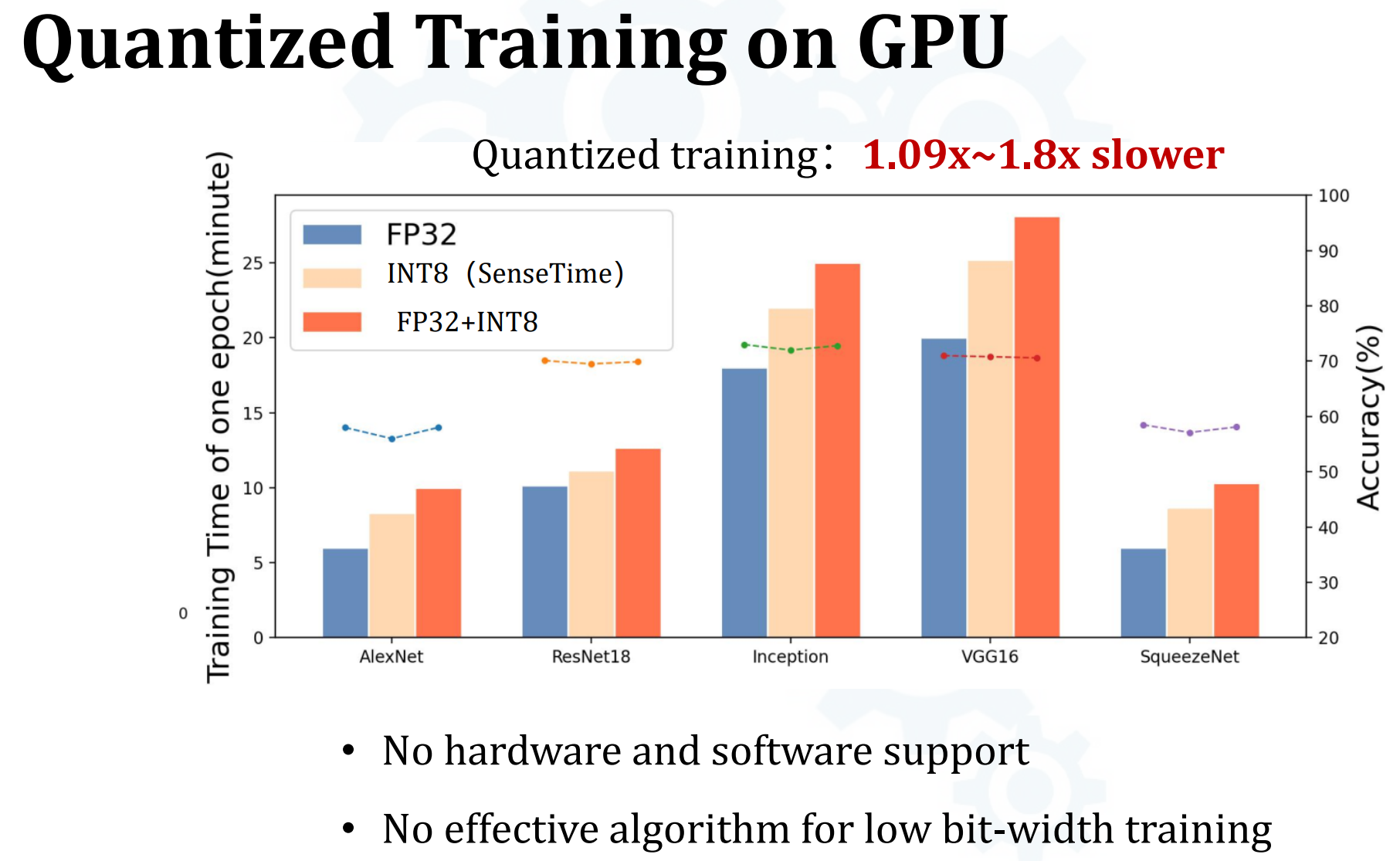
- 缺少软硬件支持(量化)
- 缺少低比特训练的有效算法支持(G也被量化)
- 参数梯度差异显著
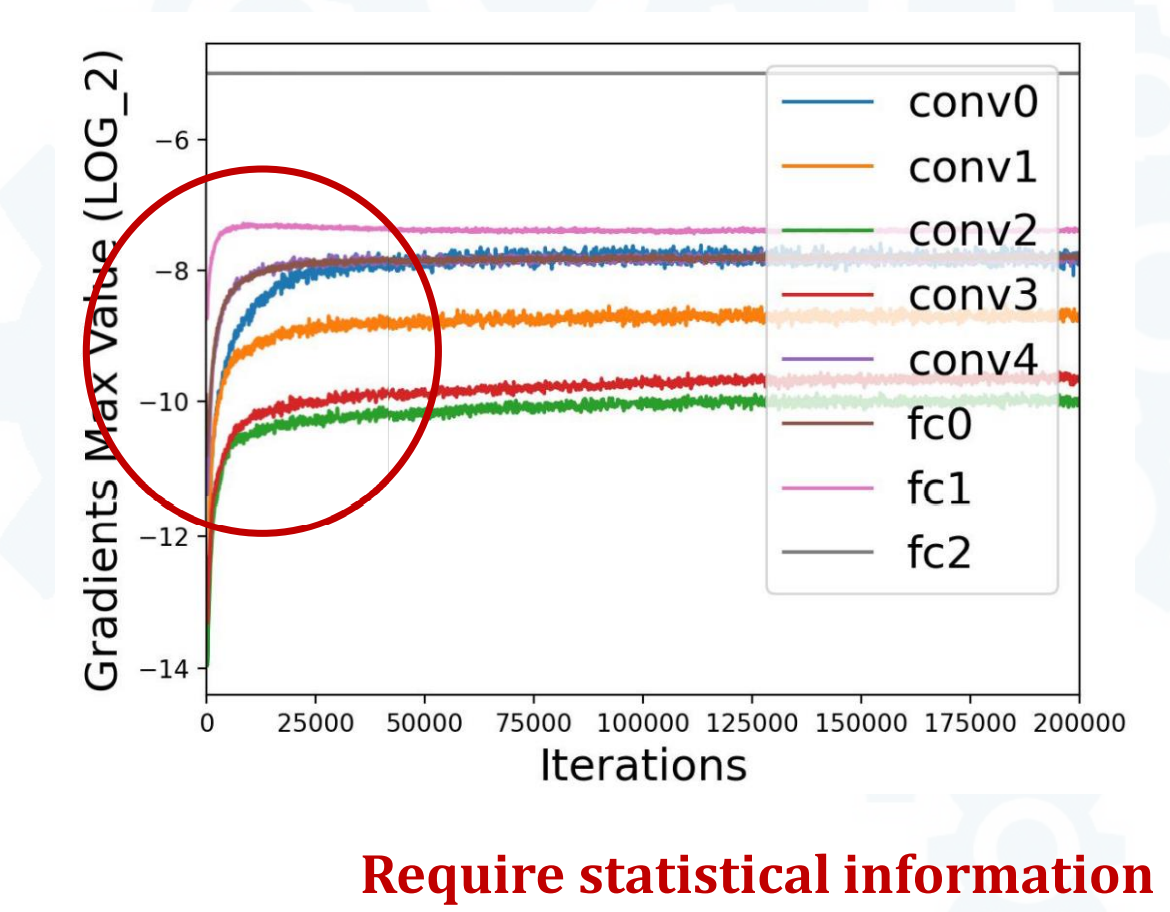
- 不同层间梯度可差2数量级,不同epoch间梯度可差3数量级 -> 需要statistical info来确定量化范围
- epoch间梯度量级变化迅速 -> 需要dynamic quantization
- CPU + ACC(hardware)- Dynamic on-the-fly Quantization Training
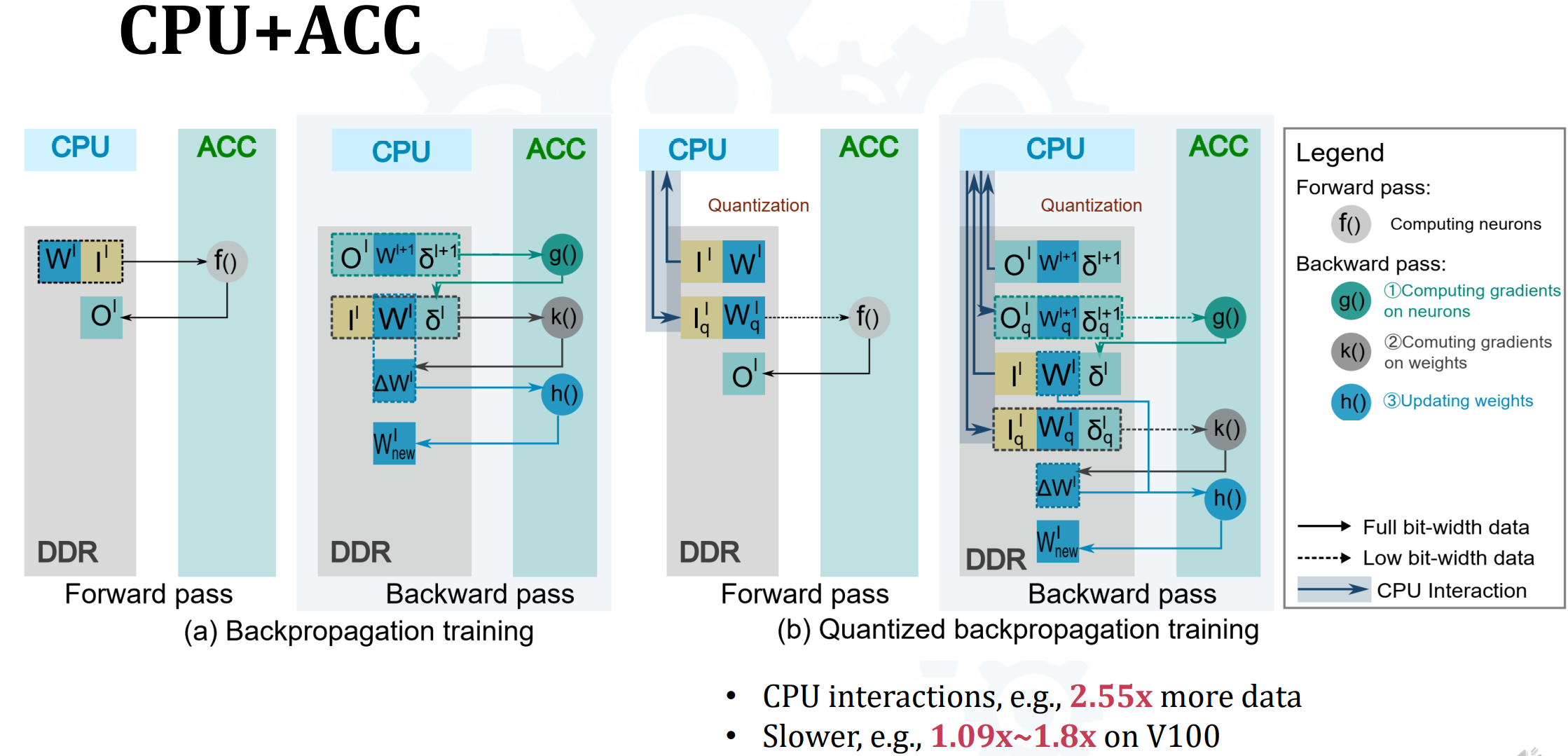
- FP前向与反向比较简单
- 前向f()很好理解
- g() -> computing gradients on neurons是指? 关于act的梯度?
- k() -> computing gradients on weights
- h() -> update weights
- 量化前向与反向更加复杂
- 前向时需要由CPU量化W和I,会拖慢速度,而且消耗更多数据获取资源
- 简单的解决方案是在ACC端加个统计单元和量化单元:
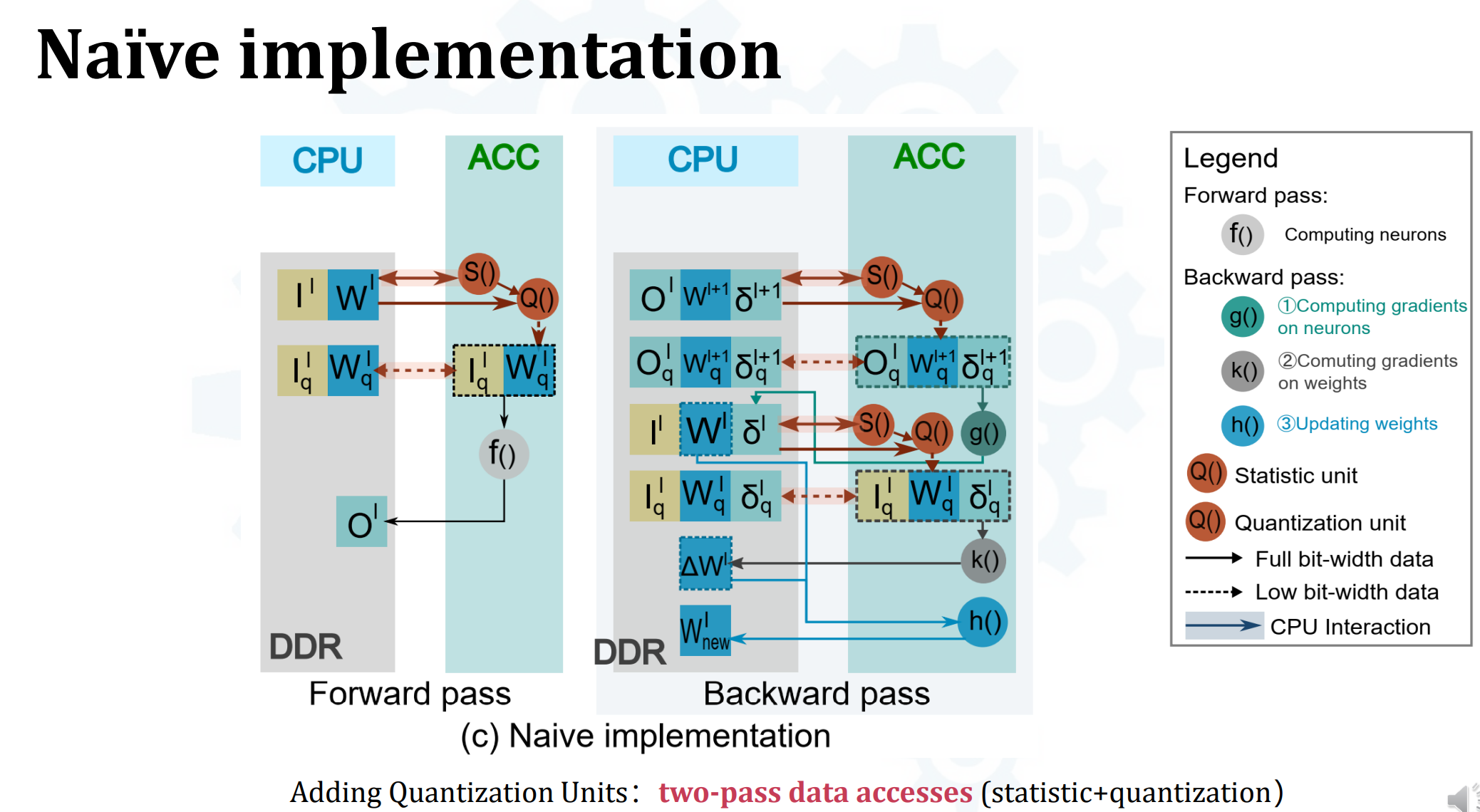
- 不是最佳方案,因为基于统计数据的量化方案要求统计数据信息,涉及额外的搬运开销(two-pass data accesses statistic + quantization)
- 除了往statistic unit和quantization unit搬,还有把量化中间结果搬回DDR的开销
- 不是最佳方案,因为基于统计数据的量化方案要求统计数据信息,涉及额外的搬运开销(two-pass data accesses statistic + quantization)
- Local Dynamic Quantization
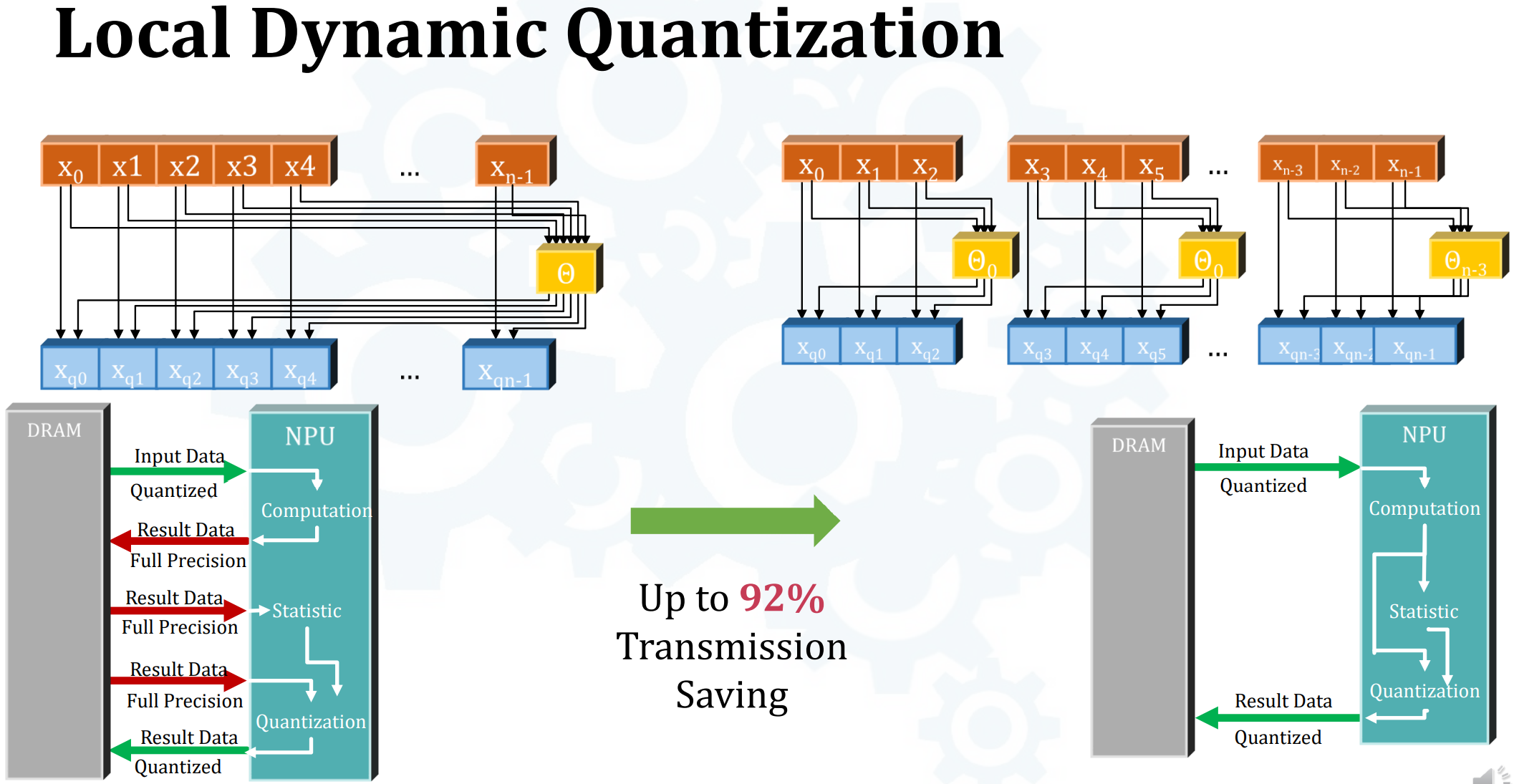
- 普通基于统计数据的量化需要算一个全局统计特性$\theta$出来,bottleneck
- 解决方法是locally(把数据分block)计算$\theta$,rounding error会更小 -> 这是把scale粒度变得更小了,scale不就更多了?
- Multi-way Quantization(E^2BQM)
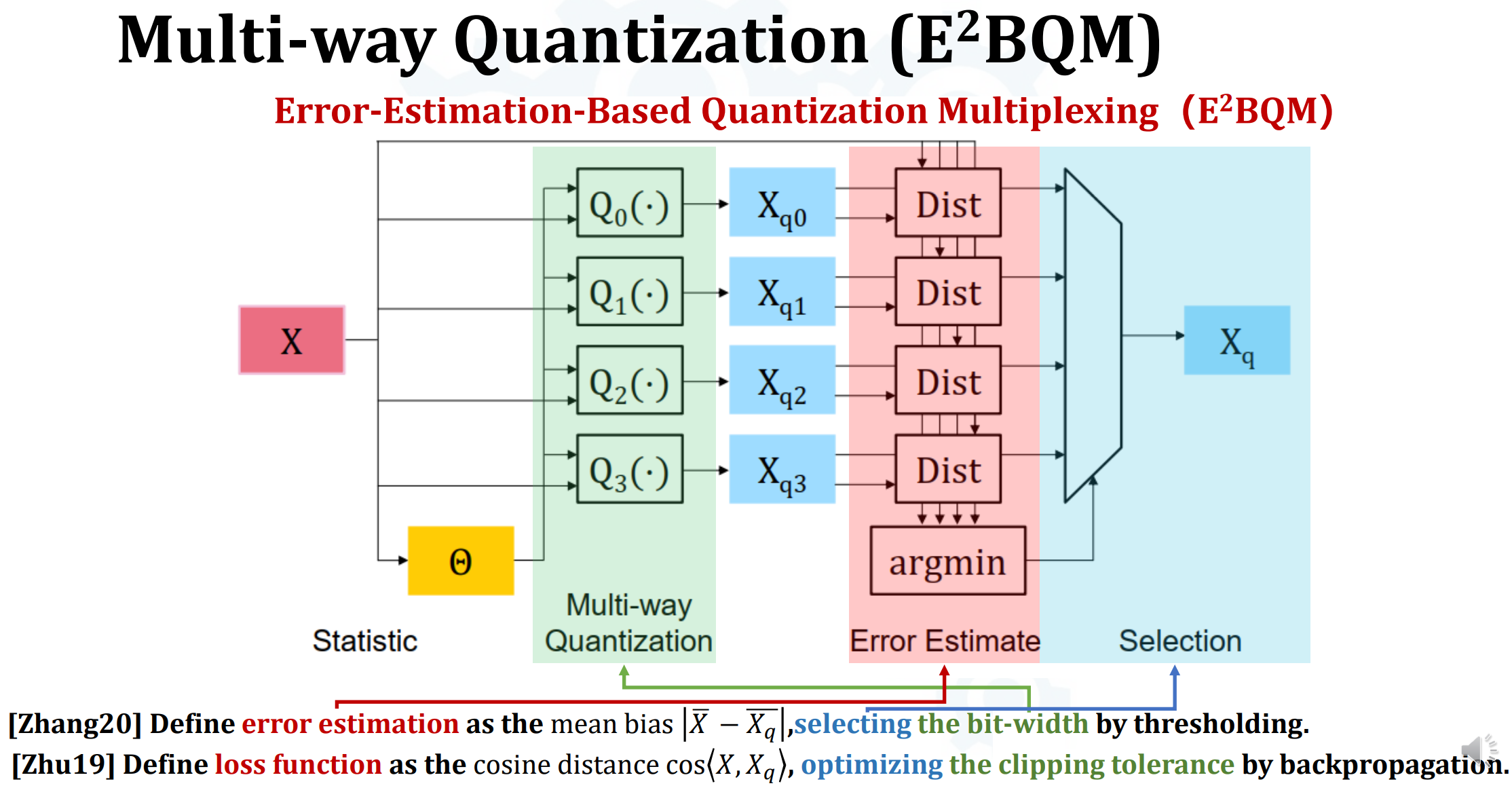
- 多路量化,根据不同准则(bit-width, loss)选择用什么方式量化
- In-place Weight Update

- 在DRAM端做参数更新
- Cambricon-Q - DNN training arch
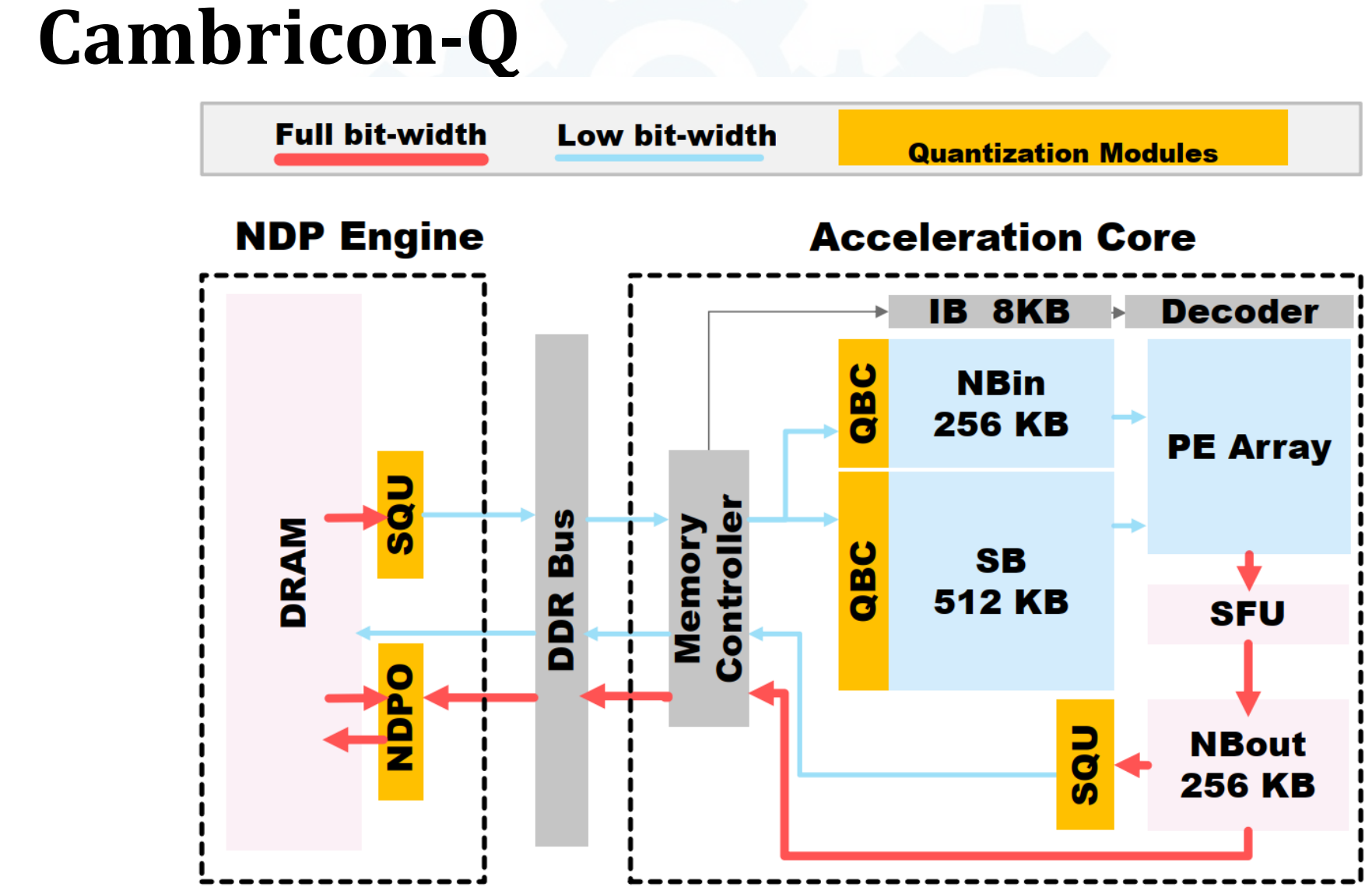
- (没细听,听了也不懂)黄框是和上面三个trick结合的结果,三个components(SQU, QBC, NDPO)具体是:
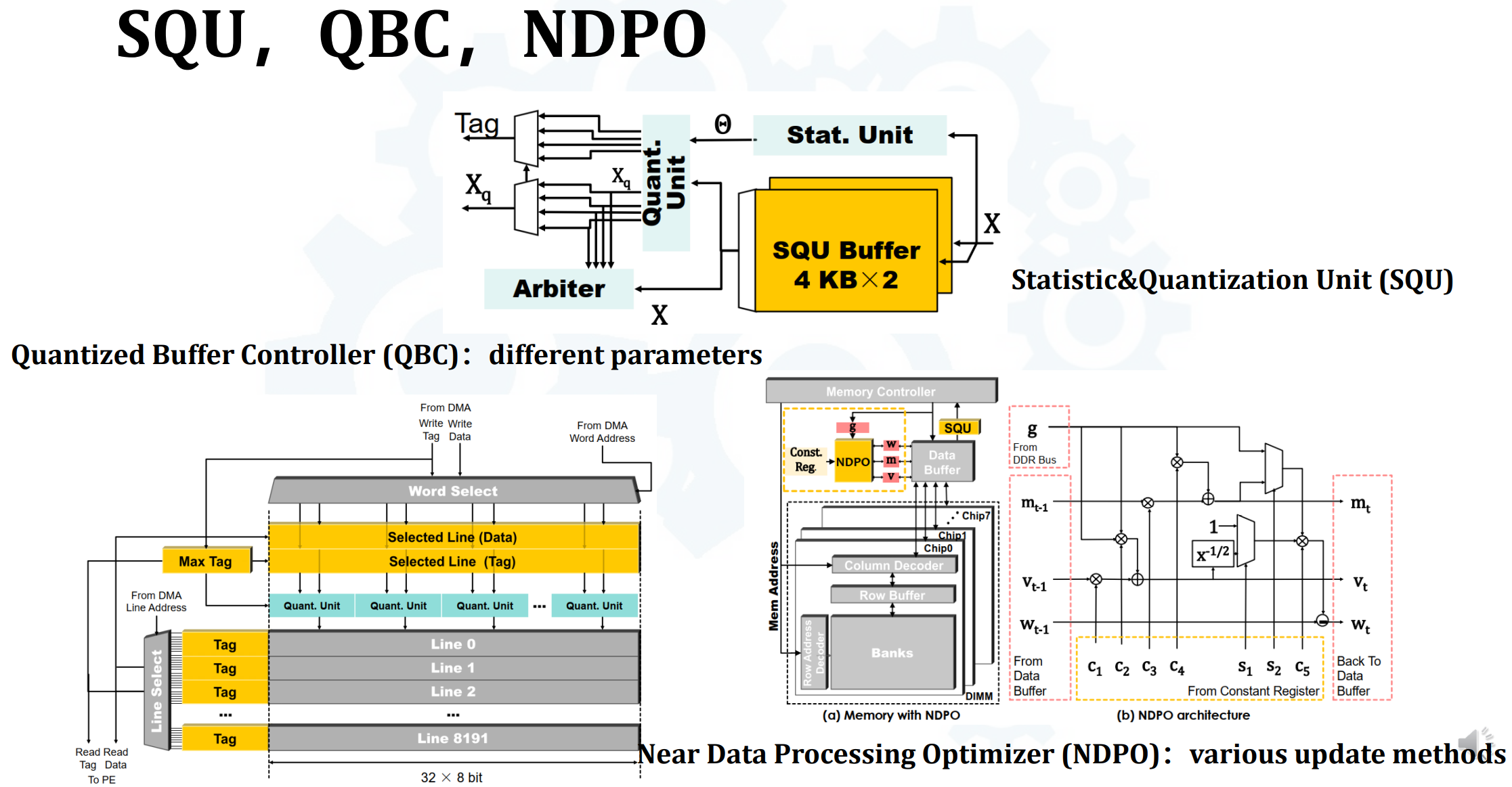
- SQU - on-the-fly statistics counting & quantization
- QBC - tackling neighboring data that may be split into 2 independent quantization processor with different parameters
- NDPO - weight update
- Cambricon-Q数据通路:
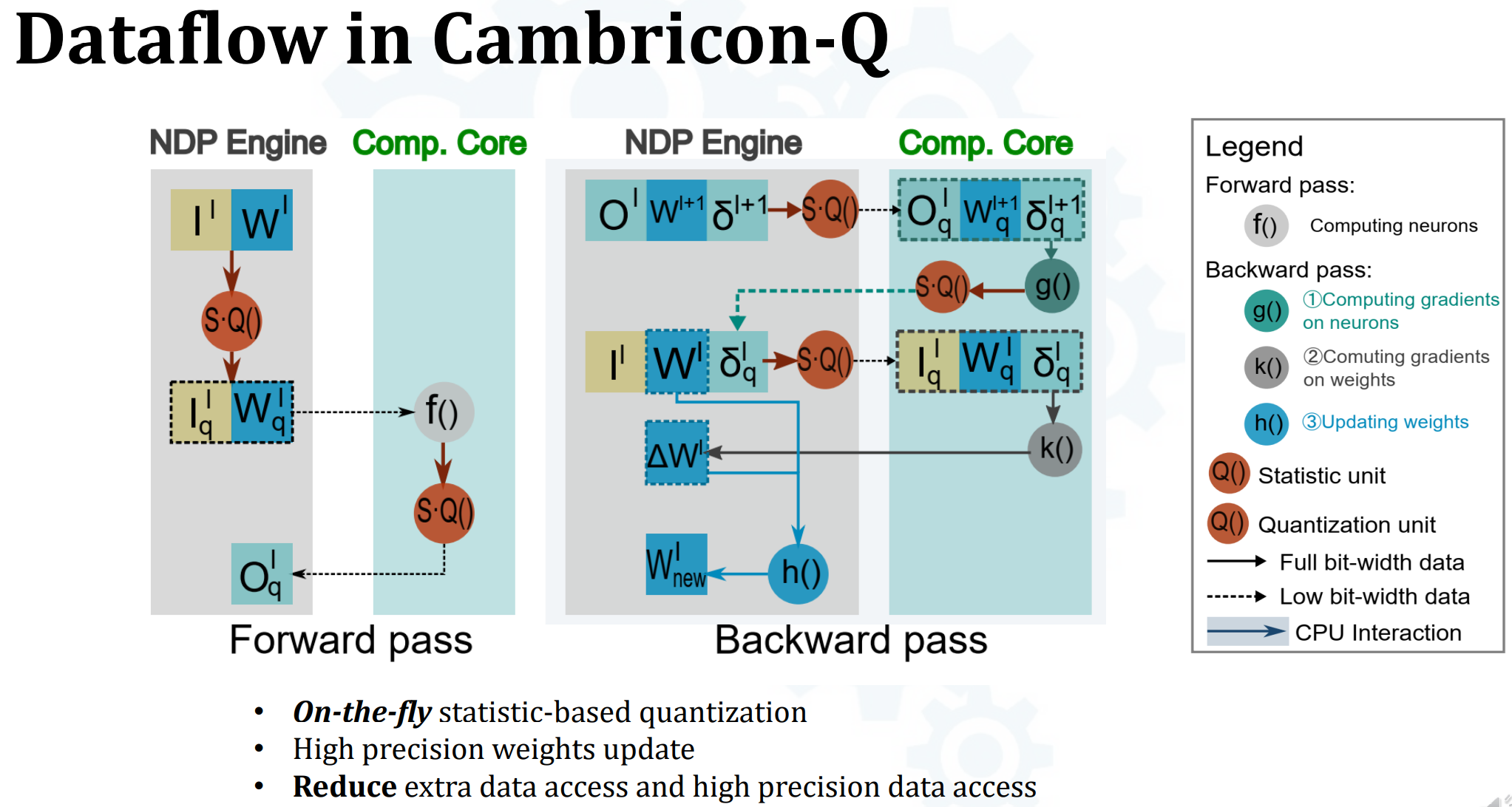
- (没细听,听了也不懂)黄框是和上面三个trick结合的结果,三个components(SQU, QBC, NDPO)具体是:
- FP前向与反向比较简单
- Conclusion
- Cambricon-Q: A Hybrid Architecture for Efficient Training
- incorporate 3 units
- targeting @ on-the-fly statistics quantization DNN training
- Quantized Training
- Statistic info
- Dynamic quant
- High-precision weight update
- Existing platform
- fake quant
- 2-pass data accesses
- Cambricon-Q: A Hybrid Architecture for Efficient Training
Talk2 - by Haojin Yang
- 经典的BNN/QNN故事:
- Deep Learning Models is expensive
- model is large, computation is extensive
- model training is not environment-friendly
- DL on Mobile Devices
- Deep Learning Models is expensive
- QAT & BNN基础与收益 - 无新意
- Im2col for GEMM: 将输入图片映射到colume
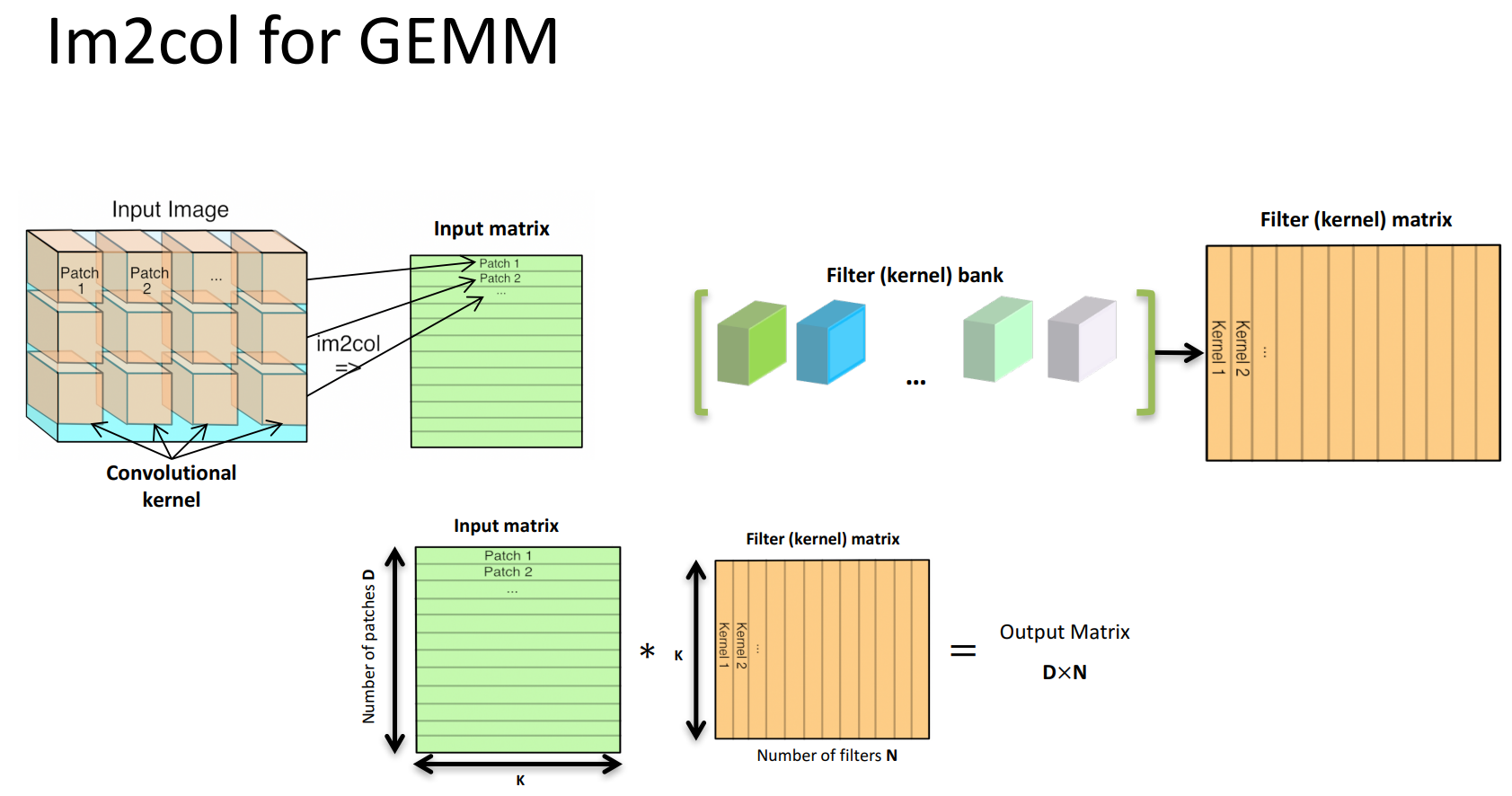
- BNN inference

- Binarizing activations row-wise, weights column-wise
- 这张图不错,FP infer和Bi infer:
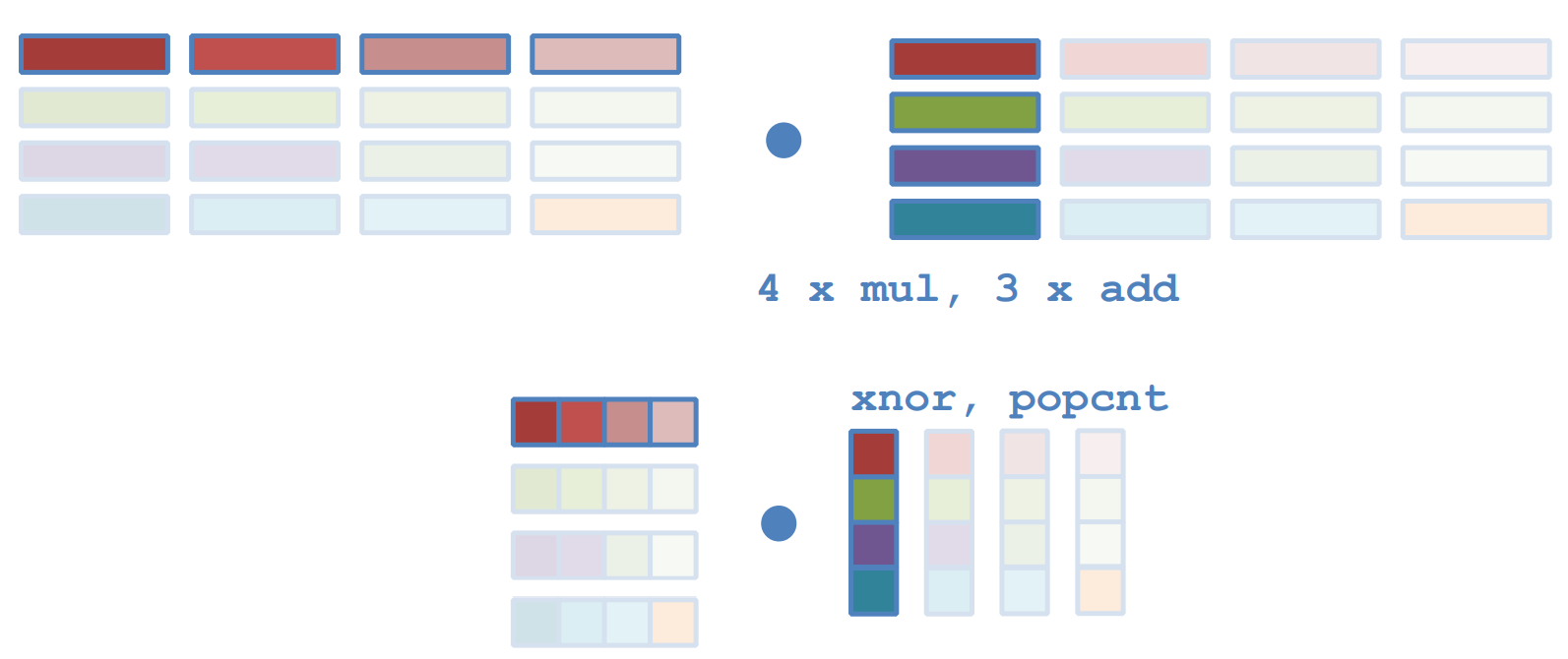
- 由于硬件的限制,还是需要少量加法
- Im2col for GEMM: 将输入图片映射到colume
- Challenges of Binary Neural Networks
- Loss of accuracy
- BNN's tailor-made optimizer
- Balancing accuracy and energy consumption
- Lack of support for solid inference acceleration on heterogeneous hardware
- Classic BNNs(对应于上述第一个问题,减少精度损失)
- XNOR-Net
- 一些over-claim:
- 加速58x的claim言过其实(似乎是对比的某种实现在实际中不常用)
- 并不能在CPU上实时运行
- 一些没说明的重要细节:
- 用了1x1 FP downsampling layers
- 一些over-claim:
- ABC-Net & GroupNet
- 用很多binary bases近似FP value
- 计算复杂,且不一定有实际加速效果
- Bi-real Net
- Binary-real valued information flow design(密集跳连、BN)
- approx sign func
- 2-stage training
- BinaryDenseNet
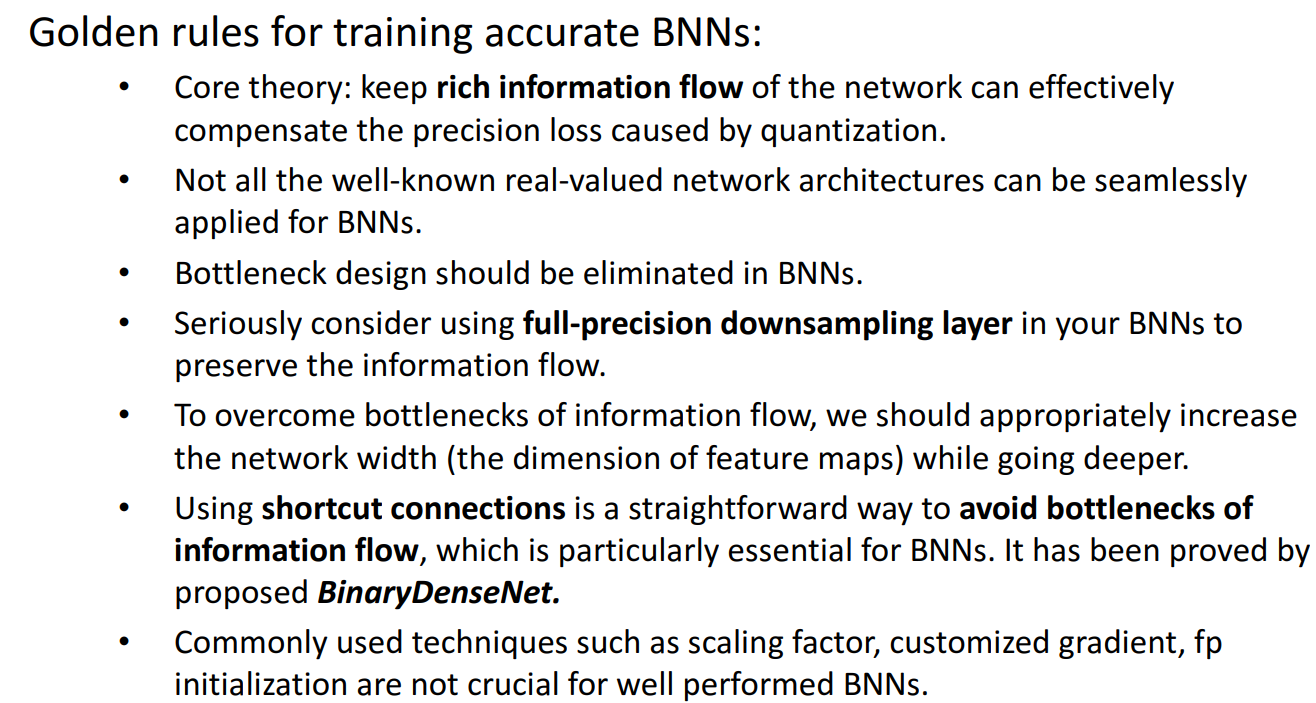
- ReActNet
- based on MobileNet V1
- channel-wise reshaping & shifting
- training tricks - KD,etc.
- XNOR-Net
- BNN Optimizer
- 依赖latent weights
- 问题
- Mismatching of optimization objective
- unnecessary computation
- Progressive Binarization
- (这篇文章似乎不错,可看?)TPAMI21 - Gradient Matters: Designing Binarized Neural Networks via Enhanced Information-Flow
- 逐渐从32bit过渡到1bit
- Balancing Accuracy and Energy Consumption
- BoolNet
-
BNN frameworks

- Future Directions
- Narrow the gap to full precision counterparts
- Dedicated architecture design
- Optimizer for BNN
- The low-dimensional space is mapped to the high-dimensional space for optimization
- Adjusts the expression space of binary network
- Algorithm-Hardware co-design
- Open platform for BNN performance evaluation on accelerators
- Narrow the gap to full precision counterparts
Talk3 - by Kai Han
- PTQ
- 主要问题还是确定$s_x$和$s_w$:
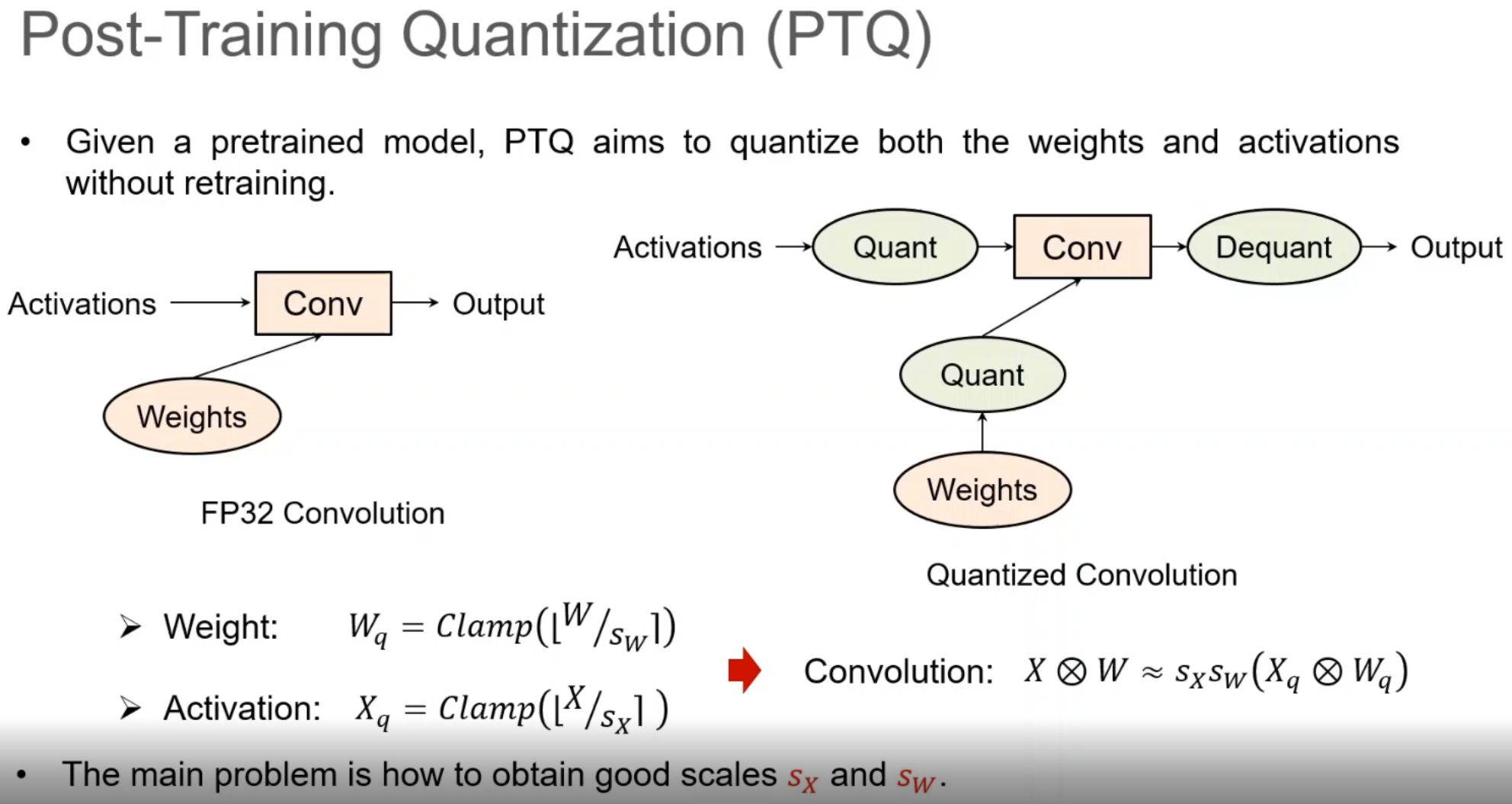
- ACIQ
- OCS
- PTQ for ViT
- ViT的量化问题:量化后self-attention信息丢失
- 解决方案:
- Ranking-aware quantization (To preserve the functionality)
- Person Coefficient(Maximize the similarity of the features)
- Bias Correction(这里简单介绍了bias correction的作用,23:45-25:00)
- 目的是为了减少bias error,如果输出error的期望不是0,则输出的均值会发生改变,这种分布的偏移会导致后续层表现异常(Q:这种quant error非零的情况应该不能通过BN校正吧?)
- 有一说一这里bias correction写得挺好的,同时考虑了W和X的量化误差:
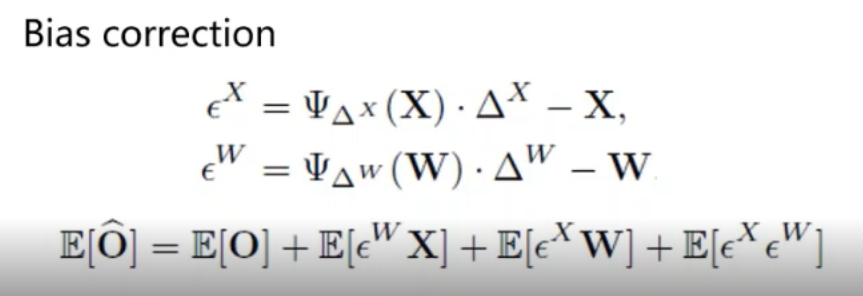
- Mixed-precision
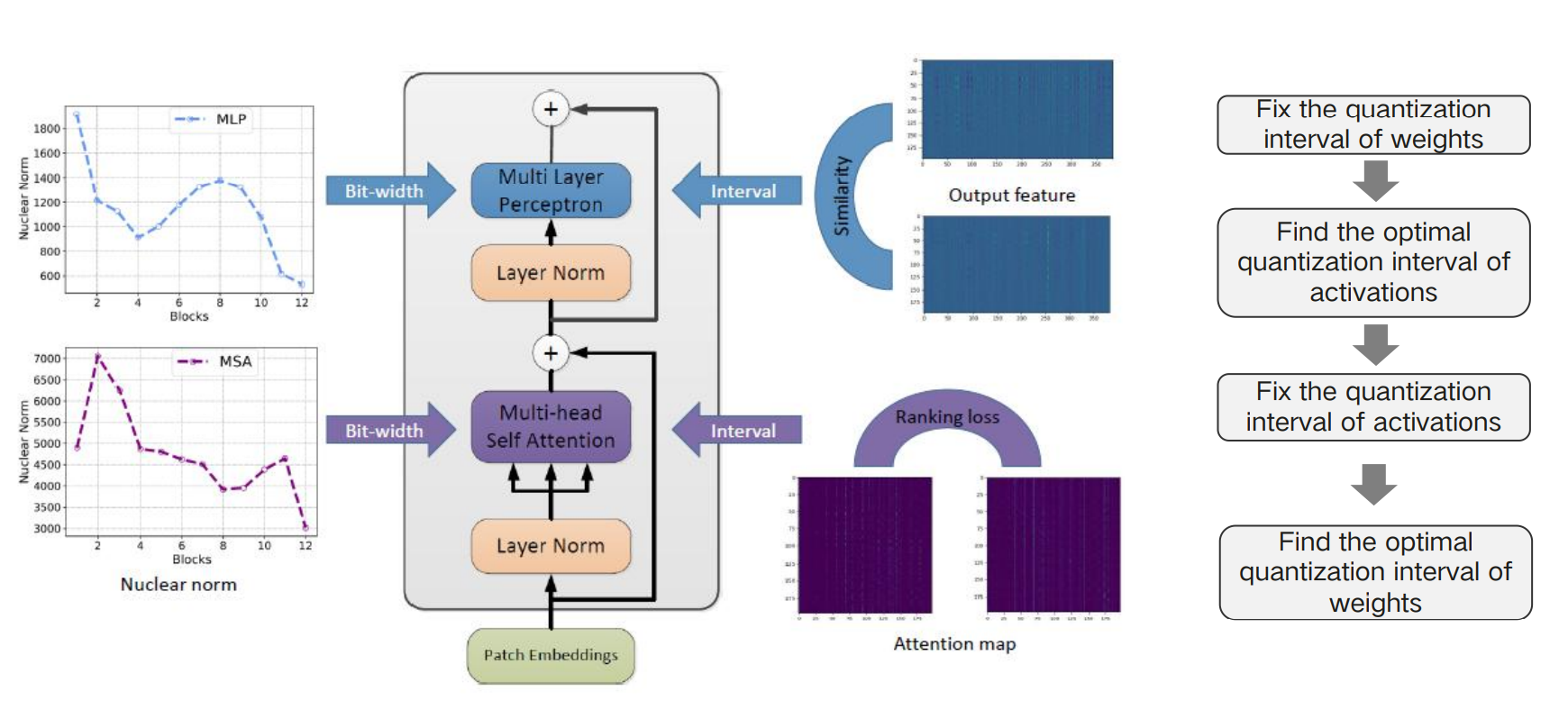
- 主要问题还是确定$s_x$和$s_w$:
- QAT
- 将4bit-QAT性能不好归因于the weights are unmatched to the low-bit setting
- DoReFa-Net
- PACT
- LSQ
- BNN
- FDA-BNN
- Arch for Low-bit
- Wider Channel
- NAS + Quant
- NAS + BNN - BATS
- Conclusion
